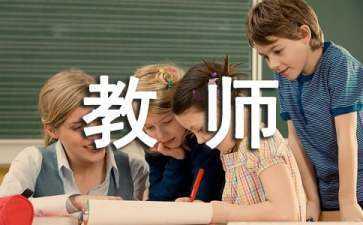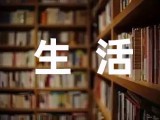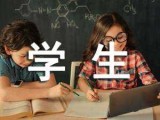unit 1 Cultural relics
part one: teaching design (第一部分:教学设计) period 1: a sample lesson plan for reading (in search of the amber room) aims: to read about cultural relics to learn about the restrictive and non-restrictive attributive clause i. warming up warming up by defining good morning, class. this period we are going to read about in search of the amber room. before our reading, i’d like to know: a. what kind of old things are cultural relics? b. are all the old things cultural relics? c. what is the definition and classification of cultural relics? d. to whom do cultural relics belong? keys for reference: a. cultural relics are physical remainders of what different peoples valued in the past and continue to value now. it can also be said that cultural relics are more than works of art, they are symbols of history and the people who lived in the past. b. no, not all the old objects are cultural relics. c. each kind of relics preserves some aspect of cultural heritage and each relic is still a unique cultural expression and contributions. d. in a larger sense, it can be said that all the cultural relics belong to all peoples and whole societies, not a certain individual. warming up by presenting hi, everyone. let’s look at the screen. i’ll present you some pictures. they all belong to cultural relics. some of them are cultural sites. some of them are natural sites. please think these over: a. can you name them out? b. who have the right to confirm and classify them? keys for reference: a. they are cultural sites: the great wall; the imperial palace of the ming and qing dynasties in beijing and shenyang; the mausoleum of the first qin emperor and the terracotta warriors; the mogao cave. these are natural sites: the jiu zhai gou valley scenic and historic interest area; the huang long scenic and histioric interest area. the followindowsg are cultural and natural sites: mount taishan; mount huangshan; mount wuyi. b. only an international professional organization from un has the authority to confirm and classify them. warming up by discussing now, boys and girls, i met a “moral dilemma”. that means i must make a choice between the interests of the family and the interests of the society. things are like this: my old granny happened to find an ancient vase under the tree in the earth of our garden. it’s so beautiful and special. now, my family fell into a moral dilemma. can you help us to make a decision: a: what should we do? b: can we keep it for ourselves or report it to the government? 共12页,当前第1页123456789101112
unit 1 Cultural relics
c: have you co me across such a situation — to make a difficult choice? keys: abc questions can be answered in all kinds of ways. the answers are flexible. ii. pre-reading 1. looking and saying work in pairs. look at the photos on the screen. all these relics are quite beautiful. but some of them were lost and ruined in history,such as yuan mingyuan and the amber room. please guess: a. what kinds of things can result in their disappearing? b. why do they come into being once again? keys for reference: a. maybe wars, natural disasters, and time have damaged or destroyed them, getting them lost and changed. many of them were even stolen and hidden while nobody knows who, where and how. b. people get to know these. if these relics could not be found again, they would be rebuilt by people. 2. explaining and sharing work in groups of four. tell your group mates: a. what do you know about the substance of “amber”? b. what do you know about the cultural relics “the amber room”? keys for reference: i am from group 2. from the knowledge we got from biology and chemistry, we know “amber” is a semi-precious stone used in jewelry and art world. amber is really the fossil form of resin from trees. it has got its shape after a process that has taken millions of years to complete. trees in very ancient forests produced this resin, which slowly dropped from trees and was buried. trees use resin to protect themselves from disease and harm caused by insects and fungi. i am from group 6. from the information of history legends and news reports, we know the amber room is a room built by lots of ambers. it was a gift given to peter the great, the king of russia, by the king of prussia, frederick william i. it was given the name because almost thousand tons of natural ambers were used to make it. but during the second world war in 1941, the nazi german army secretly stole the amber room and sent boxes of the amber room on a train to a german city. after that, what really happened to the amber room remains a mystery. iii. reading 1. reading aloud to the recording now please listen and read aloud to the recording of the text in search of the amber room. pay attention to the pronunciation of each word and the pauses within each sentence. i will play the tape twice and you shall read aloud twice, too. 2. skimming and identifying the general idea of each paragraph now please skim the text to get the key words and general idea of each paragraph. 1st paragraph the introduction about the amber room: design, colour, shape, material 共12页,当前第2页123456789101112unit 1 Cultural relics
2nd paragraph the present to the czar: a part of windowster palace in st. petersburg, a reception hall for important visitor 3rd paragraph the relocating of the amber room in catherir ⅱ times: moved into summer palace, more added to its design 4th paragraph the missing of the amber room: the two countries were at war, nazi german army stole the amber room, 27 wooden boxes were trained to a german city, nobody knew it from then on 5th paragraph the rebuilding of the amber room: a new one but the same as the old built by the two countries, for celebrating the 300th birthday of peterburg 3.scanning and analyzing the characteristics of the text. since you have got to know the general ideas of each paragraph, can you tell me the characteristics of the passage, such as, the type of writing, the way of narrating, and the tense? keys for reference: this piece of passage is a narrative prose or non-fiction article written in a narrating style. it tells the history of amber room in the order of time so that we can clearly learn about what happened to it. the tense used in the text is past tense. 4.reading and understanding next you are to read and underline all the useful expressions or collocations in the passage. copy them to your notebook after class as homework. collocations from in search of the amber room look into…, be used to…, make the design for the room, in fact, as a gift of…, add more details to…, remove… from the search for…,belong to…, feel as hard as stone, the fancy style, be made for…, in return, one of the great wonders, art objects, look much like…, give the name, be made into any shape, be made with gold and jewels, be made to be a gift, serve as…, at war, remain a mystery, be ready for… 5. reading and transferring information read the text again to complete the table, which lists all the numbers in the text. number meaning 1716 frederic william gave the amber room to peter the great as a gift. 1770 catherine ⅱ had completed the adding to the amber room in this year. 1941 the nazi german army stole the amber room in this year. the rebuilding of the amber room was completed in this year. 7000 tons the total weight of the ambers used to make the room. 55 the number of soldiers given to the king of russia in return. 600 the number of the candles lighting the amber room. 2 the two countries: german and russia. 2 in two days the amber room was removed to a german city. 100,000 the amber room was dismantled into 100,000 pieces 27 27 wooden boxes were used to contain the pieces of amber room. 共12页,当前第3页123456789101112unit 1 Cultural relics
300th the newly rebuilt amber room was ready for the 300th birthday of st peterburg city 6.reading and learning read the text and learn more about the followindowsg proper nouns. you can surf on the website after class: names of people names of places frederick ⅰ prussia frederick william ⅰ st.peterburg peter the great konigsberg catherine ⅱ windowster palace summer palace ⅳ closing down closing down by doing exercises to end the lesson you are to do the comprehending exercises no. 1 and no. 2. closing down by having a discussion a. can you imagine the fate of the amber room? what is it? b. do you think if it is worthwhile to reproduce the amber room? why? keys for reference: a. i have no idea about the fate of the amber room. because anything can happen to it. maybe it was destroyed at war in the fighting fire. you see, ambers can be melted easily. maybe it was kept secretly by somebody who had died without telling about it to anyone else. so maybe it is lying somewhere quietly. b. i think it is worthwhile to reproduce the amber room. because it represents the culture and a period of history in st. petersburg. it is a trace and feature surviving from a past age and serving to remind people of a lost time. closing down by retelling the story of the amber room well, all of us have learned the history of the amber room. let’s recall some key words and expressions on the board. you are to retell the story of the amber room: colour style shape owner present move to windowster palace add to more details remove to pieces put on trains remain a mystery 300th birthdayperiod 2: a lesson plan for learning about language (the restrictive and non-restrictive attributive clause) aims: to learn about the restrictive and non-restrictive attributive clause to discover some useful words and expressions to discover some useful structures procedures: i. warming up warming up by discovering useful words and expressions please turn to page 3. do exercises 1, 2, 3 and 4 first. please check your answers against your classmates’. warming up by explaining now, class, since you’ve read the passage, could you explain to me how to use the phrase “belong to”? the word “to” here is a preposition, indicating the possession, and is always followed by nouns or pronoun. look at ex 3. the preposition “at” indicates a state, condition or continuous activity. so we can replace them or express them by using a present-continuous tense. ii. learning about attributive clause 1. what is an adjective clause? 共12页,当前第4页123456789101112
unit 1 Cultural relics
an adjective clause is a dependent clause which takes the place of an adjective in another clause or phrase. like an adjective, an adjective clause modifies a noun or pronoun, answering questions like “which?” or “what kind of?” consider the followindowsg examples: adjective the red coat adjective clause the coat which i bought yesterday like the word “red” in the first example, the dependent clause “which i bought yesterday” in the second example modifies the noun “coat.” note that an adjective clause usually comes after what it modifies, while an adjective usually comes before. in formal writing, an adjective clause begins with the relative pronouns “who(m),” “that,” or “which.” in informal writing or speech, you may leave out the relative pronoun when it is not the subject of the adjective clause, but you should usually include the relative pronoun in formal, academic writing: informal the books people read were mainly religious. formal the books that people read were mainly religious. informal some firefighters never meet the people they save. formal some firefighters never meet the people whom they save. here are some more examples of adjective clauses: the meat which they ate was tainted this clause modifies the noun “meat” and answers the question “which meat?”. they’re talking about the movie which made him cry this clause modifies the noun “movie” and answers the question “which movie?”. they are searching for the student who borrowed the book the clause modifies the pronoun “student” and answers the question “which student?”. did i tell you about the author whom i met? the clause modifies the noun “author” and answers the question “which author?”. 2. restrictive & non restrictive clauses do the followindowsg pairs of sentences mean the same thing? 1a my uncle, who lives in london, is very rich. 2b my uncle who lives in london is very rich. 2a the policies, which were unpopular, were rejected by the voters. 2b the policies which were unpopular were rejected by the voters. 3a my niece, whose husband is out of work, will inherit the house, which i have always treasured. 3b my niece whose husband is out of work will inherit the house which i have always treasured. the first sentence in each pair has a non-restrictive clause within two commas, and the second has a restrictive clause. a non-restrictive clause simply adds more information into the sentence and does not affect the meaning of the main clause: it is therefore bracketed off with commas (1a = an uncle who happens to live in london). conversely, a restrictive clause defines its referent in the main clause more specifically and contributes significantly to the meaning of the sentence. thus it is that particular uncle who lives in london who is referred to (1b). in 2a, all policies were unpopular and all were rejected, whereas in 2b only the policies that were unpopular were rejected. note that in restrictive clauses the non-human relative pronoun is either ‘that’ or ‘which’, whereas for human referents the relative pronoun can be either ‘who/m’ or ‘that’ (the man that/whom i will marry ....). 共12页,当前第5页123456789101112unit 1 Cultural relics
3. a test on formal adjective clauses directions: combine the sentences. use formal written english. use (b) as an adjective clause. punctuate carefully. 1) (a) an antecedent is a word. (b) a pronoun refers to this word. an antecedent ____ 2) (a) the blue whale is considered the largest animal that has ever lived.(b) it can grow to 100 feet and 150 tons. the blue whale ____ 3) (a) the plane was met by a crowd of 300. (b) some of them had been waiting for more than 4 hours. the plane ____ 4) (a) in this paper, i will describe the basic process.(b) raw cotton becomes cotton thread by this process. in this paper, i will describe ____ 5) (a) the researchers are doing case studies of people to determine the importance of heredity in health and longevity.(b) these people’s families have a history of high blood pressure and heart disease. the researchers are doing case studies ____ 6) (a) at the end of this month, scientists at the institute will conduct their aids research. (b) the results of this research will be published within 6 months. at the end of this month, scientists ____ 7) (a) according to many education officials, ‘math phobia’(that is, a fear of mathematics) is a widespread problem. (b) a solution to this problem must and can be found. according to many education officials, ‘math phobia’ ____ 8) (a) the art museum hopes to hire a new administrator. (b) under this person’s direction it will be able to purchase significant pieces of art. the art museum ____ 9) (a) the giant anteater licks up ants for its dinner. (b) its tongue is longer than 30 centimeters (12 inches). the giant anteater ____ 10) (a) the anteater’s tongue is sticky. (b) it can go in and out of its mouth 160 times a minute. the anteater’s tongue ____ iii. closing down by taking a quiz quiz on attributive clause select one answer from the choices provided after each sentence. the words you choose should fit the blank in the sentence. don’t use the hint buttons unless you really need them. 1. as many children came were given some cakes. a. that b. as c. who d. whom 2. the visitors saw rows of houses the roofs are red. a. on which b. of which c. where d. that 3. i usually take a nap after lunch, is my habit. a. which it b. as it c. as d. that 4. please tell me the way you did the job. a. how b. where c. which d. in which 5 is this museum some german friends visited the day before yesterday? a. the one b. which c. that d. where 6. the farmer uses wood to build a house to store grain. 共12页,当前第6页123456789101112unit 1 Cultural relics
a. in which b. where c. that d. with which 7. i shall never forget the years i spent in the country with the farmers, has a great effect on my life. a. when, which b. that, which c. when, that d. which, that 8. little has been done is helpful to our work. a. that b. what c. which d. all that 9. perhaps this is the only market you can get such cheap goods. a. that b. of which c. by which d. where 10. we’ll put off the outing until next week, __ we won’t be so busy. a. when b. which c. at which d. in that key: 1~10:bbcda abadaperiod 3: a lesson plan for using language aims: to learn to tell facts from opinions to write a reply letter to listen and speak about cultural relics procedures i. warming up warming up by questions morning, class. we always say, “we must respect facts and can’t wholly depend on one’s opinions”. but can you tell me: a. what does it mean when you say, “it is a fact”? b. what does it mean when you say, “it is an opinion”? keys for reference: a. a fact must be real, objective and without any personal judgment. so it can be proved. b. an option always expresses one’s own ideas. it is always subjunctive. so it has not been proved. warming up by questioning turn to page 5. read the passage and tell me: a. if you want to go in for law against somebody, and if you want to windows, what’s the most important thing you should do first? b. what makes a judge decide which eyewitnesses to believe and which not to believe. keys for reference: a. searching for facts of course. the more, the better. b. the evidences offered by the eyewitnesses make the judge decide which one is believable and which is not. ii. guided reading 1. reading and defining read the passage and define: what is a fact? what is an opinion? what is an evidence? 2. reading and translating read the passage and translate it into chinese paragraph by paragraph. tom, you are to do paragraph 1, please… 3. reading and underlining next you are to read and underline all the useful expressions or collocations in the part. copy them to your notebook after class as homework. collocation from using language on page 5 in a trial, rather than, …more than…, to tell the truth, agree with, it can be proved that …, no reason to lie, a reply to a letter, think highly of, search for, return the treasure to, cost them a lot of time and money 4. listening now, boys and girls, as we know, people have never stopped searching for the amber room. this time we’ll listen to what three people say they know about the missing amber room. before we listen to them, i’ll present some related new words to you to help you understand them easily. please look at the screen and read after me. 共12页,当前第7页123456789101112
unit 1 Cultural relics
explode vt. 爆炸, czch n. 捷克, mayor n. 市长, melt vt. 熔化, sub (sub marine) n. 潜水艇,水雷, survivor n. 幸存者, titanic n. 泰坦尼克船 5. sharing and correcting well done. now share your forms with your partner and tell me in the three forms: what are facts? what are opinions? li ming, do you want a try? keys: what they heard, saw, did are facts. and what they believe are opinions. 6. reviewindowsg we often use some expressions to ask for opinions. what are they? oh, yes. what do you think of …? do you believe …? how can you be sure of …? how do you know that? and we often use some expressions to give opinions. what are they? ok, tom, please. oh, yes. they are: i think… / i don’t think… i don’t agree that… / i suppose that… 7. discussing please look at exercise 3, and discuss which person gave the best evidence. use the expressions above to help you. before we discuss, let’s deal with the followindowsg discussion: a. what is the best evidence? b. how can we know which eyewitness is most believable? keys: a. the best evidence is factual and is given by a person who is believable. b. the most believable eyewitness is the one who has nothing to gain from telling a lie. well done. let’s come to the discussion “which person gave the best evidence?” keys fore reference: jan hasek is less believable because he owns a little restaurant near the mine. if the search stopped, his business would suffer. hans braun is also less believable because he is working for a company trying to find the ship which carried the treasures in the baltic sea. of the three eyewitnesses, only anna petrov has no selfish reason for saying what she has said. in particular, she is not involved in any current effort to find the treasure. therefore she is the most believable. 8. reading and writing sometimes we may fall into or face a moral choice. that is a moral dilemma. let’s read the letter on page 7 and see what’s johann’s choice and opinion. ok, finished? now answer the followindowsg questions: a. what’s johann’s opinion about the amber room? b. what’s his father’s opinion about the things found by him? c. what happened to johann when she was a pupil? keys: a. johann thinks the people who find the amber room should keep it for them own. b. his father thinks as johann does. c. she found a little money and kept it to himself. 9. completing the letters a & b and then giving your own letters •when you write your letter, you may choose to agree or not agree with the writer. 共12页,当前第8页123456789101112unit 1 Cultural relics
•you must give a reason why you agree or don’t agree with the writer. •be sure to give an example from your own life so that the reader can better understand your opinion. ⅲ closing down closing down by a debating there is a long ancient wall around a less developed town. it is reported it has a long history, dating back to over 5 century bc. the local government is collecting money to repair and rebuild the wall. it has cost a lot of money. some of your classmates think it is not worth. some think it’s a good way to develop the local economy. now group 1 and 2 against group 3 and 4. let’s have the debating. closing down by dictation •the design for the room was of the fancy style popular in those days. •the room served as a small reception hall for important visitors. •the man who found the relics insist that it belongs to his family. •the room was completed the way she wanted it . •it was ready for the people of st. petersburg to celebrate the 300th birthday of their city. •after that, what really happened to the amber room remains a mystery. •in a trial, a judge must decide which eyewitnesses to believe and which not to believe. •is it something that more than one person believes? •a fact is anything that can be proved. •an opinion is what someone believes is true but has not been proved. part tw teaching resources (教学资源) section 1: a text structure analysis of in search of the amber room i. type of writing and summary of the idea type of writing this is a piece of narrative writing. main idea of the passage the history of the amber room general idea of 1st para the simple description of the amber room general idea of 2nd para the present sent to the czar general idea of 3rd para the detail adding and relocating of the amber room general idea of 4th para the stolen of the amber room in world war ⅱ general idea of 5th para the rebuilding of the amber room ii. a tree diagram the amber room: the best and biggest work of country’s best prussian artists para.1section 2: background information on culture relics i. what is a culture relic? 何谓 “文化遗产”? cultural relics are physical reminders of what different peoples valued in the past and continue to value now. without these relics, we could not cherish cultural traditions as much or appreciate the lives of the people who practiced those traditions. although we may not often consider it, cultural relics are not only the possession of one culture. in a larger sense, it can be said that they belong to all peoples. for these reasons, this unit describes cultural relics not from china but other places. looking at it from another angle, it can also be said that cultural relics preserves some aspect of cultural heritage and each relic, regardless of whether the same hands created many examples of it, is still a unique cultural expression and contribution. 共12页,当前第9页123456789101112
unit 1 Cultural relics
ii. the cultural relics of china in the world heritage site list《世界文化遗产名录》中的30处中国文遗产 本单元的主题是“文化遗产”,学生很可能已经亲身接触过当地的文化遗产,或是能过电视、报纸等媒体对此有了一定的了解,因此,在课前教师可让学生列举国内外著名的文化遗产,然后对“文化遗产”给出定义、分类或划分标准。到XX年底,我国已有30处文物古迹和自然景观被联合国科教文组织世界遗产委员会列入《世界遗产名录》,以下是这些文化遗产的名称、性质和列人《世界遗产名录》的年份: ◆mount taishan(泰山),listed as a world cultural and natural site in 1987. ◆the great wall(长城),cultural site, 1987. ◆the imperial palace of the ming and qing dynasties in beijing and shenyang(北京故宫、沈阳故宫),cultural site, 1987,. ◆the mogao caves(敦煌莫高窟),cultural site,1987. ◆the mausoleum of the first qin emperor and the terracotta warriors(泰始皇陵及兵马俑坑),cultural site,1987. ◆the peking man site at zhoukoudian(周口店北京猿人遗址),cultural site,1987. ◆mount huangshan(黄山),cultural and natural site,1990. ◆the jiuzhaigou valley scenic and historic interest area(九寨沟景色名胜区),natural site,1992. ◆the huanglong scenic and historic interest area(黄龙景色名胜区),natural site,1992. ◆the wulingyuan scenic and historic interest area (武陵源景色名胜区),natural site,1992. ◆the mountain resort and its outline temple, chengde(河北承德避暑山庄及周围寺庙),cultural site,1994. ◆the temple and cemeter of confucius and the kong family mansion in qufu (曲阜孔府、孔庙、孔林),cultural site,1994. ◆the ancient building complex in the wudang mountains(武当山古建筑群),cultural site,1994. ◆historic ensemble of the potala palace, lhasa(西藏布达拉宫),cultural site,1994. ◆the lushan national park(庐山),cultural site,1996. ◆mount emei and the leshan giant buddha scenic area(峨眉山一乐山大佛景色名胜区),cultural and natural site.1996. ◆the ancient city of pingyao(平遥古城),cultural site,1997. ◆the classical gardens of suzhou(苏州园林),cultural site,1997. ◆the old town of lijiang(丽江古城),cultural site,1997. ◆the summer palace(颐和园),cultural site,1998. ◆the temple of heaven:an imperial sacrificial altar in beijing(天坛),cultural site,1998. ◆dazu rock carvings(大足石刻),cultural site, 1999. ◆mount wuyi(武夷山),cultural and natural site,1999. ◆mount qincheng and the dujiangyan irrigation system(青城山一都江堰),cultural site,. ◆aucient villages in southern anhui—xidi and hongcun(安徽古村落一西递、宏村),cultural site,. ◆longmen grottoes(龙门石窟),cultural site,. ◆imperial tombs of the ming and qing dynasties(明清皇家陵寝),cultural site . 共12页,当前第10页123456789101112unit 1 Cultural relics
◆yungang grottoes(云冈石窟),cultural site,. ◆three parallel rivers of yunan protected areas,natural site(三江并流),. ◆capital cities and tombs of the ancient koguryo kingdom(高句丽的王城、王陵和贵族墓葬),cultural site,. section 3: words and expressions from unit i cultural relics cultural adj. 文化的 a cultural independence / cultural exchange relic n. sth. old that reminds us of the past遗迹;古物 unearthed cultural / a relic of early civilization survive vt.&vi. to continue to live, esp. after coming close to death; to continue to live after…幸免于;幸存;……之后还活着 survive the traffic accident / survive all her children remain vi. 1. to stay or be left behind after others have gone or been removed停留;留居;留下when the others had gone, mary remained and put back the furniture.2. to continue to be( in an unchanged state)继续;依然remain young / remain to be uncompleted; peter became a judge but john remained a fisherman. if you won’t eat you’ll just have to remain hungry! 3. it remains to be seen: we shall know later on.情况仍未明,要看怎么样发展。 state n. 国家;政府;州;状态 state schools / state documents /in a poor state of health look int to examine the meaning or causes of考察,调查 look into the matter / look into the event rare adj. 稀罕的;稀有的;珍贵的 the rare air of the mountains / rare metals / a rare book dynasty n. 朝代;王朝 the qing dynasty / the tudor dynasty in england belong to to be the property of; to be a member of; to be connected with属于;为……的一员;与……有关系belong to a club / belong to a class / belong to me in search of 寻找 in search of the cure to the disease / in search of the lost boy amber n. adj. 琥珀;琥珀制的;琥珀色的 the amber traffic lights / a decoration of amber gift n. 赠品;礼物;天赋 birthday gifts / gift vouchers / a gift for music melt vt. vi. (使)融化;(使)熔化 melt the snow / melt the anger /melt in water heat n. vt. 热;热度;把……加热;使激动 the body heat/ the heat of a debate/ heat soup for lunch design n. a plan in the mind; a drawindowsg or pattern showindowsg how sth. is to be made设计;图案 vt. to imagine and plan out in the mind设计;构思 curious in design / make a design for a monument; design an engine / design dresses for a queen fancy adj.奇特的;异样的(无最高级和比较级)vt.想象;设想;爱好 a fancy price / fancy goods / fancy his coming /fancy herself still young style n.风格;风度;类型 do things in style / in the style of / out of style. jewel n.珠宝;宝石 precious jewels / a jewel necklace 共12页,当前第11页123456789101112推荐站内搜索:七年级周记、家庭趣事作文500字、桂林山水作文400字、湖北高职高专分数线、青校心得体会、安徽自考学校、济南大学泉城学院分数线、项链读后感500字、心得体会文章、教师资格证官方网站报名入口、


 unit 1 Cultural relics
unit 1 Cultural relics





